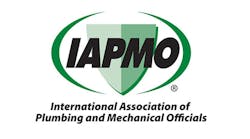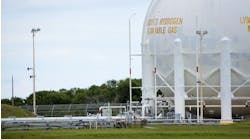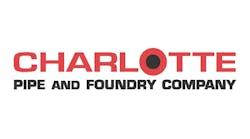Are plastic building materials safe? Jay Peters asks a provocative and much-needed question. As a manufacturer of both metal and plastic piping products, we at Charlotte Pipe think about this all the time. We believe the industry can only benefit from a more robust debate and discussion of safety and code compliance.
Specifically, Jay points out that, “plastic materials are abundant and steadily injecting themselves throughout the industry;” and that their safety, “depend[s] on the type of plastic and the intended use.”
I agree with these statements. PVC, CPVC, PEX, PPR, ABS, and PE-RT are all terrific materials. The trade needs them in their toolbox. But we need to take a critical look at where we are using these products and make certain these applications are safe.
Have financial pressures since 2008 skewed all decisions so that material selection is only a matter of lowest first cost? It often seems so.
we need to take a critical look at where we are using these products and make certain these applications are safe.
The drive for lower cost has led to some unusual specifications. We have seen that materials that are well suited for low-rise and/or residential applications have been repurposed for commercial applications where they may not perform well or may not be appropriate from a life safety standpoint.
While we are all beholden to the bottom line, material selection cannot and should not be based solely upon cost. The first consideration should always be safety. While some products can seem cost-effective, the higher risks associated with these goods make them simply too dangerous to be used for certain applications. Trying to “correct” for safety deficiencies often leads to the substitute product being more expensive than the originally specified product.
Here are a few examples of where I believe first cost and code minimum specifications may be driving poor decisions.
The volume of combustible plastic materials used in construction has grown exponentially. To see this you only need take a peek in any un-ducted return air plenum space. I don’t think that any regulator, engineer, contractor or manufacturer anticipated the volume of plastic products that includes cabling, water pipe and fire sprinkler pipe in these spaces. I have seen no testing or consideration of how they interact in combination in a fire, or in this volume.
Jay referenced hydrogen chloride gas as a product of combustion of chlorinated plastics such as PVC and CPVC. There are some great studies available from Harvard University, the FAA and Southwest Research indicating that HCL is a fairly benign irritant. That being said, it has also been reported that while conducting surface burning tests of these products, the lab techs have been driven out of well-ventilated labs and left with respiratory distress that has lasted for a couple of days. There must be a point at which HCL might slow or even prevent someone from escaping a burning building. If I were a firefighter, this would concern me.
Under both the International Mechanical and Uniform Mechanical Codes the basis for a material’s inclusion into an un-ducted return air plenum space is passing an ASTM E84/UL723 test with values of 25 flame spread and 50 smoke developed or less. This seems to be a straightforward and reasonable measure.
This test protocol, however, is not rigorously or consistently applied.
Manufacturer A could test two ¾-inch CPVC empty water lines suspending the sample above the flame for the duration of the test which results in smoke developed of more than two times what the code allows.
Manufacturer B could run the same test, same two ¾-inch CPVC empty water lines, suspending the sample in a manner to quickly drop from the supports and lose contact with the flame and, abracadabra, the smoke developed could be one half of what the code requires. A passing test report from a recognized lab that any regulator or listing agency will accept could be issued. Now the same exact product, in what is defined as the same test, meets code.
Codes for high-rise structures, (often defined as anything above the reach of local fire ladders) have traditionally required non-combustible products to ensure that the buildings were fire-safe for the occupants. But that has changed. Increasingly combustible plastic products are allowed and used in high-rise construction.
Some in the industry have even raised questions regarding the longevity of these fire-stop systems.
When these products penetrate a fire-rated separation, the penetration must be restored using a fire-stop system in conformance with ASTM E814. In many jurisdictions these fire-stop systems may be installed by each of the mechanical trades by untrained workers. Often these penetrations are sealed within inaccessible spaces where the fire-stop system can never again be accessed or inspected.
Some in the industry have even raised questions regarding the longevity of these fire-stop systems. They are required to last the life of the building, but do they? I don’t know. And I don’t know who does. Currently, this practice meets code.
Much of today’s new multi-family construction that I see employs very different materials than prior periods where steel and concrete were the norm. They meet code so, theoretically, they should be safe. After the 2015 Edgewater five-alarm fire in New Jersey that destroyed 400 new wood-frame apartments, some code officials and municipal leaders have begun to reconsider this position due to safety concerns. Sandy Springs, Georgia, changed its code regarding certain construction materials. I wonder if the use of combustible piping systems in some types of construction might warrant a similar review.
We make both metal and plastic products. And we’re proud to work with both materials. When the right materials are used in the right application everyone benefits. In the United States we have some of the best building codes in the world. But without thorough and frank discussion, stringent testing and an unwavering commitment to safety, they won’t stay that way.
Bill Morris is the Vice President of Technical Services and Product Development at Charlotte Pipe & Foundry Co. He has over 30 years of plumbing industry experience, including sales for multiple plumbing manufacturers, and overseeing education and technical support to engineers and contractors. He has been active in the model code and standard development process through ASTM International, ASME and NSF International.


